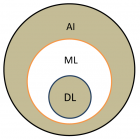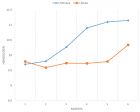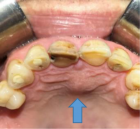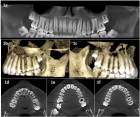Abstract
Review Article
Artificial Intelligence in the healthcare of older people
Elizabeta B Mukaetova-Ladinska*, Tracy Harwood and John Maltby
Published: 20 March, 2020 | Volume 4 - Issue 1 | Pages: 007-013
Clinical applications of Artificial Intelligence (AI) in healthcare are relatively rare. The high expectations in relation to data analysis influencing general healthcare have not materialized, with few exceptions, and then predominantly in the field of rare diseases, oncology and pathology, and interpretation of laboratory results. While electronic health records, introduced over the last decade or so in the UK have increased access to medical and treatment histories of patients, diagnoses, medications, treatment plans, immunization dates, allergies, radiology images, laboratory and test results, these have potential for evidence-based tools that providers can use to make decisions about a patient’s care, as well as streamline workflow. In the following text, we review the advances achieved using machine learning and deep learning technology, as well as robot use and telemedicine in the healthcare of older people.
Key points:
1. Artificial Intelligence use is extensively explored in prevention, diagnosis, novel drug designs and after-care.
2. AI studies on older adults include a small number of patients and lack reproducibility needed for their wider clinical use in different clinical settings and larger populations.
3. Telemedicine and robot assisted technology are well received by older service users.
4. Ethical concerns need to be resolved prior to wider AI use in routine clinical setting.
Read Full Article HTML DOI: 10.29328/journal.apmh.1001011 Cite this Article Read Full Article PDF
Keywords:
Artificial intelligence; Dementia; Geriatric Medicine; Older People; Healthcare
References
- Jiang F, Jiang Y, Zhi H, Dong Y, Li H, et al. Artificial intelligence in healthcare: past, present and future. Stroke Vasc Neurol. 2017; 2: 230-243. PubMed: https://www.ncbi.nlm.nih.gov/pubmed/29507784
- Hargreaves DS, Sizmur S, Viner RM. Do young and older adults have different health care priorities? Evidence from a national survey of English inpatients. J Adolesc Health. 2012; 51: 528-532. PubMed: https://www.ncbi.nlm.nih.gov/pubmed/23084177
- Lafortune C, Huson K, Santi S, Stolee P. Community-based primary health care for older adults: a qualitative study of the perceptions of clients, caregivers and health care providers. BMC Geriatr. 2015; 15: 57.
- Age UK. Briefing: Health and Care of Older People in England 2017. 2017. https://www.ageuk.org.uk/Documents/EN-GB/For-professionals/Research/The_Health_and_Care_of_Older_People_in_England_2016.pdf?dtrk=true
- Miotto R., Li L, Kidd BA, Dudley JT. Deep patient: An unsupervised representation to predict the future of patients from the electronic health records. Sci Rep. 2016; 6: 26094.
- Kickingereder P, Bonekamp D, Nowosielski M, Kratz A, Sill M, et al. Radiogenomics of glioblastoma: Machine learning–based classification of molecular characteristics by using multiparametric and multiregional MR imaging features. Radiology. 2016; 281: 907-918. PubMed: https://www.ncbi.nlm.nih.gov/pubmed/27636026
- Korfiatis P, Kline TL, Lachance DH, Parney IF, Buckner JC, et al. Residual deep convolutional neural network predicts MGMT methylation status. J Digit Imaging. 2017; 30: 622-628. PubMed: https://www.ncbi.nlm.nih.gov/pubmed/28785873
- Irie R, Otsuka Y, Hagiwara A, Kamagata K, Kamiya K, et al. A Novel Deep Learning Approach with a 3D Convolutional Ladder Network for Differential Diagnosis of Idiopathic Normal Pressure Hydrocephalus and Alzheimer's Disease. Magn Reson Med Sci. 2020. PubMed: https://www.ncbi.nlm.nih.gov/pubmed/31969525
- Costantino G, Falavigna G, Solbiati M, Casagranda I, Sun BC, et al. Neural networks as a tool to predict syncope risk in the Emergency Department Europace. 2017; 19: 1891-1895. PubMed: https://www.ncbi.nlm.nih.gov/pubmed/28017935
- Ho L, Legere M, Li T, Levine S, Hao K, et al. Autonomic nervous system dysfunctions as a basis for a predictive model of risk of neurological disorders in subjects with prior history of traumatic brain injury: Implications in Alzheimer's Disease. J Alzheimers Dis. 2017; 56: 305-315. PubMed: https://www.ncbi.nlm.nih.gov/pubmed/27911325
- Pekkala T, Hall A, Lötjönen J, Mattila J, Soininen H, et al. Development of a late-life Dementia Prediction Index with supervised machine learning in the population-based CAIDE Study. J Alzheimers Dis. 2017; 55: 1055-1067. PubMed: https://www.ncbi.nlm.nih.gov/pubmed/27802228
- Patterson BW, Engstrom CJ, Sah V, Smith MA, Mendonça EA, et al. Training and Interpreting Machine Learning Algorithms to Evaluate Fall Risk After Emergency Department Visits. Med Care. 2019; 57: 560-566. PubMed: https://www.ncbi.nlm.nih.gov/pubmed/31157707
- Ambagtsheer RC, Shafiabady N, Dent E, Seiboth C, Beilby J. The application of artificial intelligence (AI) techniques to identify frailty within a residential aged care administrative data set. Int J Med Inform. 2020; 136: 104094. https://www.ncbi.nlm.nih.gov/pubmed/32058264
- Hatton CM, Paton LW, McMillan D, Cussens J, Gilbody S, et al. Predicting persistent depressive symptoms in older adults: A machine learning approach to personalised mental healthcare. J Affect Disord. 2019; 246: 857-860. https://www.ncbi.nlm.nih.gov/pubmed/30795491
- Nait Aicha A, Englebienne G, van Schooten KS, Pijnappels M, Kröse B. Deep Learning to Predict Falls in Older Adults Based on Daily-Life Trunk Accelerometry. Sensors (Basel). 2018; 18: 1654. PubMed: https://www.ncbi.nlm.nih.gov/pubmed/29786659
- Dyrba M, Barkhof F, Fellgiebel A, Filippi M, Hausner L, et al. Predicting prodromal Alzheimer’s Disease in subjects with Mild Cognitive Impairment using machine learning classification of multimodal multicentre Diffusion-Tensor and Magnetic Resonance Imaging data. J Neuroimaging. 2015; 25: 738-747. PubMed: https://www.ncbi.nlm.nih.gov/pubmed/25644739
- Rentoumi V, Raoufian L, Ahmed S, de Jager CA, Garrard P. Features and machine learning classification of connected speech samples from patients with autopsy proven Alzheimer's disease with and without additional vascular pathology. J Alzheimers Dis. 2014; 42. PubMed: https://www.ncbi.nlm.nih.gov/pubmed/25061045
- Wang N, Chen J, Xiao H, Wu L, Jiang H, et al. Application of artificial neural network model in diagnosis of Alzheimer's disease. BMC Neurol. 2019; 19: 154. PubMed: https://www.ncbi.nlm.nih.gov/pubmed/31286894
- Davis SE, Lasko TA, Chen G, Siew ED, Matheny ME. Calibration drift in regression and machine learning models for acute kidney injury. J Am Med Inform Assoc. 2017; 24: 1052-1061. PubMed: https://www.ncbi.nlm.nih.gov/pubmed/28379439
- Kuo KM, Talley PC, Huang CH, Cheng LC. Predicting hospital-acquired pneumonia among schizophrenic patients: a machine learning approach. BMC Med Inform Decis Mak. 2019; 19: 42. PubMed: https://www.ncbi.nlm.nih.gov/pubmed/30866913
- Iluz T, Weiss A, Gazit E, Tankus A, Brozgol M, et al. Can a Body-Fixed Sensor Reduce Heisenberg's Uncertainty When It Comes to the Evaluation of Mobility? Effects of Aging and Fall Risk on Transitions in Daily Living. J Gerontol A Biol Sci Med Sci. 2016; 71: 1459-1465. PubMed: https://www.ncbi.nlm.nih.gov/pubmed/25934996
- Corradi JP, Thompson S, Mather JF, Waszynski CM, Dicks RS. Prediction of Incident Delirium Using a Random Forest classifier. J Med Syst. 2018; 42: 261. PubMed: https://www.ncbi.nlm.nih.gov/pubmed/30430256
- Rahimian F, Salimi-Khorshidi G, Payberah AH, Tran J, Ayala Solares R, et al. Predicting the risk of emergency admission with machine learning: Development and validation using linked electronic health records. PLoS Med. 2018; 15: e1002695. PubMed: https://www.ncbi.nlm.nih.gov/pubmed/30458006
- Zhong F, Xing J, Li X, Liu X, Fu Z, et al. Artificial intelligence in drug design. Sci China Life Sci. 2018; 61: 1191-1204. PubMed: https://www.ncbi.nlm.nih.gov/pubmed/30054833
- Lee KS, Park KW. Social determinants of the association among cerebrovascular disease, hearing loss and cognitive impairment in a middle-aged or older population: Recurrent neural network analysis of the Korean Longitudinal Study of Aging (2014-2016). Geriatr Gerontol Int. 2019; 19: 711-716. PubMed: https://www.ncbi.nlm.nih.gov/pubmed/31257714
- Penteridis L, D'Onofrio G, Sancarlo D, Giuliani F, Ricciardi F, et al. Robotic and sensor technologies for mobility in older people. Rejuvenation Res. 2017; 20: 401-410. PubMed: https://www.ncbi.nlm.nih.gov/pubmed/28482748
- Ozaki K, Kondo I, Hirano S, Kagaya H, Saitoh E, et al. Training with a balance exercise assist robot is more effective than conventional training for frail older adults. Geriatr Gerontol Int. 2017; 17: 1982-1990. PubMed: https://www.ncbi.nlm.nih.gov/pubmed/28295912
- Bustamante K, Montes S, Madrigal MDJ, Burciaga A, Martínez ME, et al. Technology-assisted stroke rehabilitation in Mexico: a pilot randomized trial comparing traditional therapy to circuit training in a Robot/technology-assisted therapy gym. J Neuroeng Rehabil. 2016; 13: 83. PubMed: https://www.ncbi.nlm.nih.gov/pubmed/27634471
- Forrester LW, Roy A, Hafer-Macko C, Krebs HI, Macko RF. Task-specific ankle robotics gait training after stroke: a randomized pilot study. J Neuroeng Rehabil. 2016; 13: 51. PubMed: https://www.ncbi.nlm.nih.gov/pubmed/27255156
- Chen TL, Bhattacharjee T, McKay JL, Borinski JE, Hackney ME, et al: Evaluation by Expert Dancers of a Robot That Performs Partnered Stepping via Haptic Interaction. PLoS One. 2015; 10: e0125179. PubMed: https://www.ncbi.nlm.nih.gov/pmc/articles/PMC4438977/
- Güttler J, Georgoulas C, Linner T, Bock T. Towards a future robotic home environment: A survey. Gerontology. 2015; 61: 268-80. PubMed: https://www.ncbi.nlm.nih.gov/pubmed/25341658
- O'Brien K, Liggett A, Ramirez-Zohfeld V, Sunkara P, Lindquist LA. Voice-Controlled Intelligent Personal Assistants to Support Aging in Place. J Am Geriatr Soc. 2020; 68: 176-179. PubMed: https://www.ncbi.nlm.nih.gov/pubmed/31617581
- Robinson H, MacDonald B, Broadbent E. Physiological effects of a companion robot n blood pressure of older people in residential care facility: a pilot study. Australas J Ageing. 2015; 34: 27-32. PubMed: https://www.ncbi.nlm.nih.gov/pubmed/24373064
- Abbott R, Orr N, McGill P, Whear R, Bethel A, et al. How do "robopets" impact the health and well-being of residents in care homes? A systematic review of qualitative and quantitative evidence. Int J Older People Nurs. 2019; 14: e12239. PubMed: https://www.ncbi.nlm.nih.gov/pubmed/31070870
- Robinson H, Macdonald B, Kerse N, Broadbent E. The psychosocial effects of a companion robot: a randomized controlled trial. J Am Med Dir Assoc. 2013; 14: 661-667. PubMed: https://www.ncbi.nlm.nih.gov/pubmed/23545466
- Łukasik S, Tobis S, Wieczorowska-Tobis K, Suwalska A. Could Robots Help Older People with Age-Related Nutritional Problems? Opinions of Potential Users. Int J Environ Res Public Health. 2018; 15. PubMed: https://www.ncbi.nlm.nih.gov/pubmed/30424561
- Cortellessa G, Fracasso F, Sorrentino A, Orlandini A, Bernardi G, et al. ROBIN, a telepresence robot to support older users monitoring and social inclusion: Development and evaluation. Telemed J E Health. 2018; 24: 145-154. PubMed: https://www.ncbi.nlm.nih.gov/pubmed/28771398
- Takaeda K, Kamimura T, Inoue T, Nishiura Y. Reliability and acceptability of using a social robot to carry out cognitive tests for community-dwelling older adults. Geriatr Gerontol Int. 2019; 19: 552-556. PubMed: https://www.ncbi.nlm.nih.gov/pubmed/30884153
- Chu L, Chen HW, Cheng PY, Ho P, Weng IT, et al. Identifying Features that Enhance Older Adults' Acceptance of Robots: A Mixed Methods Study. Gerontology. 2019; 65: 441-450. PubMed: https://www.ncbi.nlm.nih.gov/pubmed/30844813
- Car J, Sheikh A, Wicks P, Williams MS. Beyond the hype of big data and artificial intelligence: Building foundations for knowledge and wisdom. BMC Med. 2019; 17: 143.
- Wang S, Bolling K, Mao W, Reichstadt J, Jeste D, et al. Technology to Support Aging in Place: Older Adults' Perspectives. Healthcare (Basel). 2019; 7. PubMed: https://www.ncbi.nlm.nih.gov/pubmed/30974780
- Wangmo T, Lipps M, Kressig RW, Ienca M. Ethical concerns with the use of intelligent assistive technology: findings from a qualitative study with professional stakeholders. BMC Med Ethics. 2019; 20: 98. PubMed: https://www.ncbi.nlm.nih.gov/pubmed/31856798
- Matheny ME, Whicher D, Thadaney Israni S. Artificial Intelligence in health Care: A report from the National Academy of Medicine. JAMA. 2019. PubMed: https://www.ncbi.nlm.nih.gov/pubmed/31845963
- Miller DD. The medical AI insurgency: what physicians must know about data to practice with intelligent machines. NPJ Digit Med. 2019; 2: 62.
- Char DS, Shah NH, Magnus D. Implementing machine learning in health care - addressing ethical challenges. N Engl J Med. 2018; 378: 981-983. PubMed: https://www.ncbi.nlm.nih.gov/pubmed/29539284
- Jaremko JL, Azar M, Bromwich R, Lum A, Alicia Cheong LH, et al. Canadian Association of Radiologists (CAR) Artificial Intelligence Working Group. Canadian Association of Radiologists White Paper on ethical and legal issues related to Artificial Intelligence in radiology. Can Assoc Radiol J. 2019; 70: 107-118. PubMed: https://www.ncbi.nlm.nih.gov/pubmed/30962048
Figures:

Figure 1
Similar Articles
-
Comparison of Cardiovascular Risks following Smoking Cessation Treatments Using Varenicline vs. NRT among Schizophrenic SmokersSusan Abughosh*,I-Hsuan Wu,Hua Chen,Ekere James Essien,Michael Johnson,Patrick Bordnick2,Ronald J Peters. Comparison of Cardiovascular Risks following Smoking Cessation Treatments Using Varenicline vs. NRT among Schizophrenic Smokers. . 2017 doi: 10.29328/journal.apmh.1001001; 1: 001-010
-
Artificial Intelligence in the healthcare of older peopleElizabeta B Mukaetova-Ladinska*,Tracy Harwood,John Maltby. Artificial Intelligence in the healthcare of older people. . 2020 doi: 10.29328/journal.apmh.1001011; 4: 007-013
-
Targeted community outreach events to deliver healthcare to diverse rural populationsTrina Aguirre*,Nancy Meier,Kelly Betts,Ann Koehler. Targeted community outreach events to deliver healthcare to diverse rural populations. . 2020 doi: 10.29328/journal.apmh.1001021; 4: 060-062
-
Organizational and methodological aspects of the work of a psychiatrist on a qualification category. Current status and prospects of psychiatric care in RussiaShapovalova LA,Shapovalov KA*. Organizational and methodological aspects of the work of a psychiatrist on a qualification category. Current status and prospects of psychiatric care in Russia. . 2022 doi: 10.29328/journal.apmh.1001035; 6: 001-012
-
Hospitalization, Surgery and lonelinessKarishma Patel,Ami Rokach*. Hospitalization, Surgery and loneliness. . 2024 doi: 10.29328/journal.apmh.1001049; 8: 001-007
-
Approaching Mental Health Through a Preventive Data Analysis PlatformGabriel F Pestana, Olga Valentim*. Approaching Mental Health Through a Preventive Data Analysis Platform. . 2024 doi: 10.29328/journal.apmh.1001052; 8: 020-027
-
Physicians’ Anxiety Post-COVID Pandemic: A Cross-Sectional StudyIsmail Hanine*, Mouna Chtibi, Kenza Hajjami, Siham Belbachir, Mohamed Kadiri, Abderrazzak Ouanass. Physicians’ Anxiety Post-COVID Pandemic: A Cross-Sectional Study. . 2024 doi: 10.29328/journal.apmh.1001054; 8: 032-037
Recently Viewed
-
Cystoid Macular Oedema Secondary to Bimatoprost in a Patient with Primary Open Angle GlaucomaKonstantinos Kyratzoglou*,Katie Morton. Cystoid Macular Oedema Secondary to Bimatoprost in a Patient with Primary Open Angle Glaucoma. Int J Clin Exp Ophthalmol. 2025: doi: 10.29328/journal.ijceo.1001059; 9: 001-003
-
Metastatic Brain Melanoma: A Rare Case with Review of LiteratureNeha Singh,Gaurav Raj,Akshay Kumar,Deepak Kumar Singh,Shivansh Dixit,Kaustubh Gupta*. Metastatic Brain Melanoma: A Rare Case with Review of Literature. J Radiol Oncol. 2025: doi: ; 9: 050-053
-
Depression as a civilization-deformed adaptation and defence mechanismBohdan Wasilewski*,Olha Yourtsenyuk,Eugene Egan. Depression as a civilization-deformed adaptation and defence mechanism. Insights Depress Anxiety. 2020: doi: 10.29328/journal.ida.1001013; 4: 008-011
-
Drinking-water Quality Assessment in Selective Schools from the Mount LebanonWalaa Diab, Mona Farhat, Marwa Rammal, Chaden Moussa Haidar*, Ali Yaacoub, Alaa Hamzeh. Drinking-water Quality Assessment in Selective Schools from the Mount Lebanon. Ann Civil Environ Eng. 2024: doi: 10.29328/journal.acee.1001061; 8: 018-024
-
Rapid Microbial Growth in Reusable Drinking Water BottlesQishan Liu*,Hongjun Liu. Rapid Microbial Growth in Reusable Drinking Water Bottles. Ann Civil Environ Eng. 2017: doi: 10.29328/journal.acee.1001007; 1: 055-062
Most Viewed
-
Evaluation of Biostimulants Based on Recovered Protein Hydrolysates from Animal By-products as Plant Growth EnhancersH Pérez-Aguilar*, M Lacruz-Asaro, F Arán-Ais. Evaluation of Biostimulants Based on Recovered Protein Hydrolysates from Animal By-products as Plant Growth Enhancers. J Plant Sci Phytopathol. 2023 doi: 10.29328/journal.jpsp.1001104; 7: 042-047
-
Sinonasal Myxoma Extending into the Orbit in a 4-Year Old: A Case PresentationJulian A Purrinos*, Ramzi Younis. Sinonasal Myxoma Extending into the Orbit in a 4-Year Old: A Case Presentation. Arch Case Rep. 2024 doi: 10.29328/journal.acr.1001099; 8: 075-077
-
Feasibility study of magnetic sensing for detecting single-neuron action potentialsDenis Tonini,Kai Wu,Renata Saha,Jian-Ping Wang*. Feasibility study of magnetic sensing for detecting single-neuron action potentials. Ann Biomed Sci Eng. 2022 doi: 10.29328/journal.abse.1001018; 6: 019-029
-
Pediatric Dysgerminoma: Unveiling a Rare Ovarian TumorFaten Limaiem*, Khalil Saffar, Ahmed Halouani. Pediatric Dysgerminoma: Unveiling a Rare Ovarian Tumor. Arch Case Rep. 2024 doi: 10.29328/journal.acr.1001087; 8: 010-013
-
Physical activity can change the physiological and psychological circumstances during COVID-19 pandemic: A narrative reviewKhashayar Maroufi*. Physical activity can change the physiological and psychological circumstances during COVID-19 pandemic: A narrative review. J Sports Med Ther. 2021 doi: 10.29328/journal.jsmt.1001051; 6: 001-007

HSPI: We're glad you're here. Please click "create a new Query" if you are a new visitor to our website and need further information from us.
If you are already a member of our network and need to keep track of any developments regarding a question you have already submitted, click "take me to my Query."

















































































































































